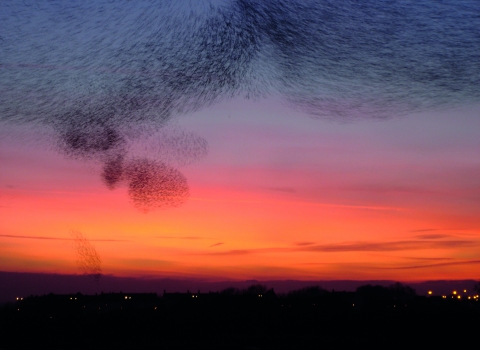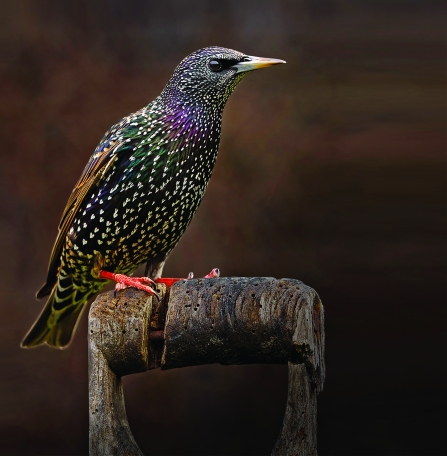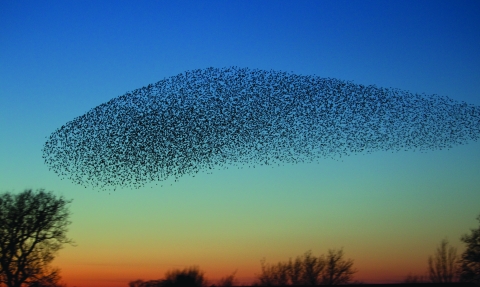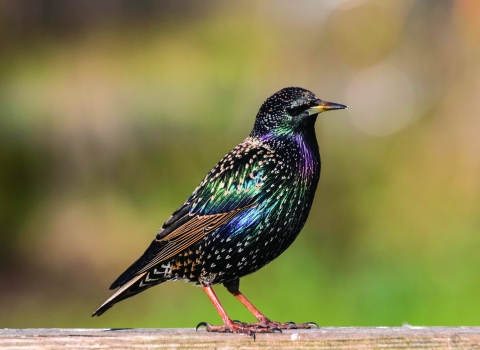Common starlings (Sturnus vulgaris) are one of Yorkshire’s most familiar birds, and yet many don’t fully appreciate its dazzling qualities.
Starlings have such fantastic plumage which changes from a glossy green, black and purple sheen, bright pink legs with a bright yellow bill during summer to a stunning dark speckled white bird in winter. They live for an average of five years, but the oldest ever recorded was over twenty years old.
A singing male bird will produce a whole array of sounds, each subtly different from the next. Starlings are great mimics too, sometimes copying human-produced sounds such as alarms and even mobile phone rings.





